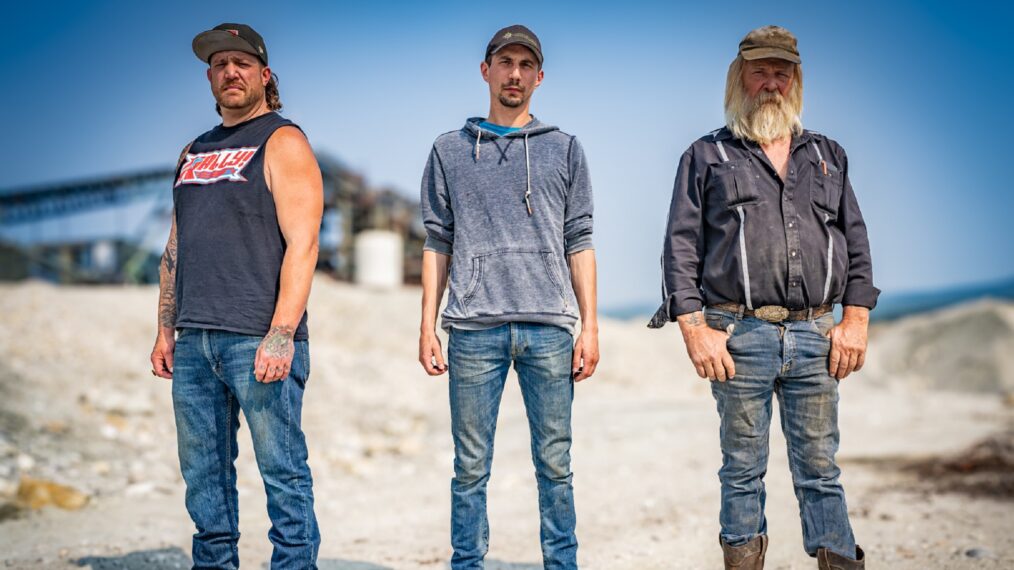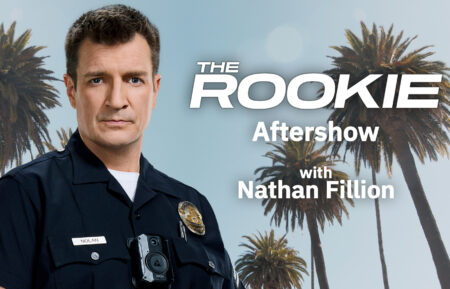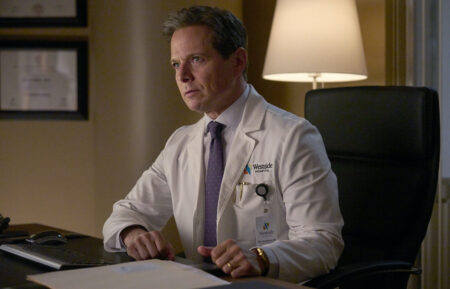‘Expedition Unknown’: Josh Gates Details Amazing Finds at ‘Indiana Jones’ Location
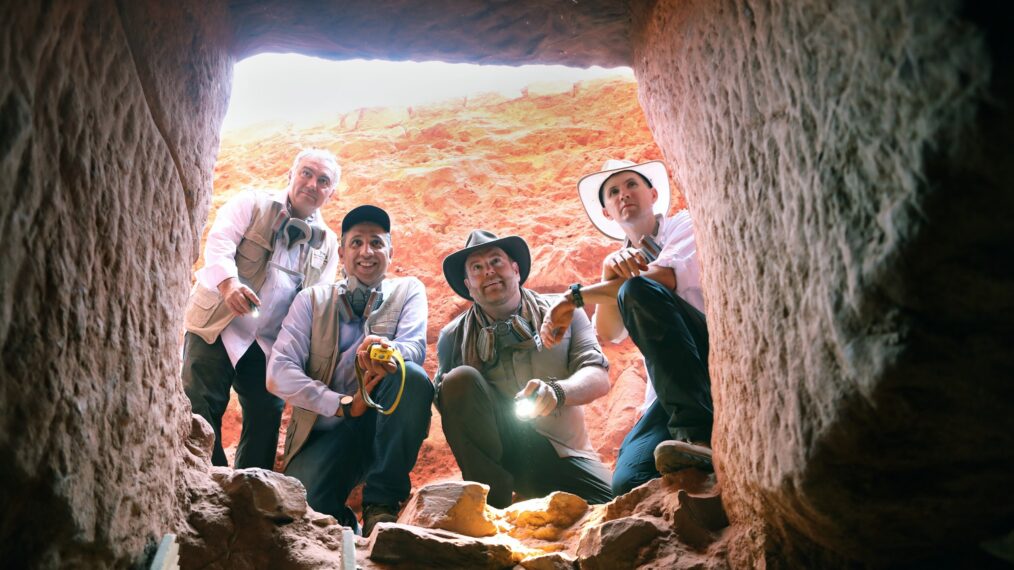
Q&A
Josh Gates has taken viewers everywhere from a lost city in the remote jungles of Cambodia to diving into the Caribbean waters for sunken treasure. Now the adventurer has set his eyes on helping unseal a long-buried tomb with remains of ancient skeletons. The historic discovery beneath the iconic Treasury building in Petra, Jordan is chronicled as part of the new season of Gates’ Expedition Unknown.
It was 2,000 years ago when the Nabataean Kingdom carved an entire city by hand into the walls of a desert canyon, placing at its center the magnificent structure known as “The Treasury.” Made famous for housing the Holy Grail as seen in Indiana Jones and the Last Crusade, the true purpose of The Treasury remains a mystery.
This pursuit for answers was part of a joint Jordanian/American project led by the American Center of Research’s (ACOR) Executive Director and Professor Pearce Paul Creasman. His team was given exceedingly rare permission to conduct a remote sensing scan and dig beneath The Treasury. They made a stunning discovery: a tomb filled with at least a dozen Nabataean burials located directly beneath the building where more than a million visitors a year come to visit.
Ahead of the two-part season premiere, Gates takes us through the groundbreaking excavation and what’s to come.
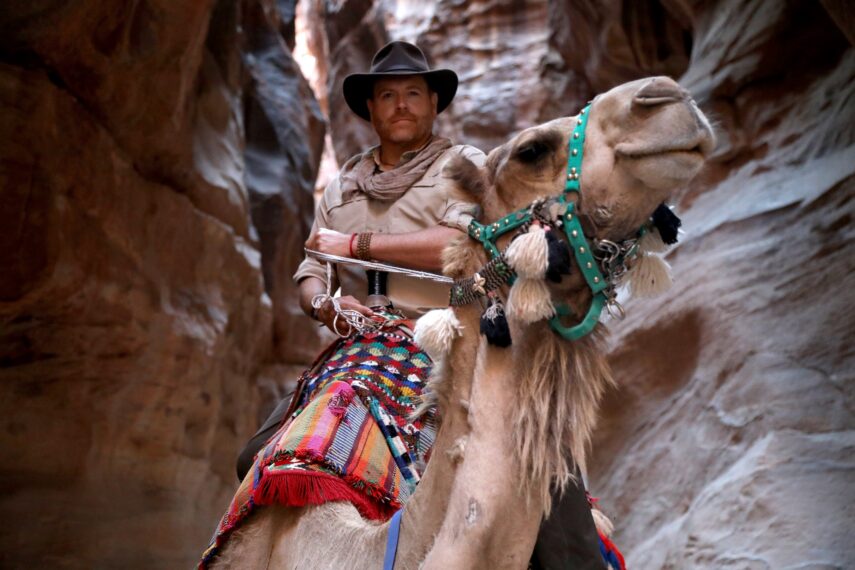
Expedition Unknown host Josh Gates at the entrance to Petra. (Photo Credit: Discovery)
What goes into deciding a destination?
Josh Gates: We always want to go to places in the world where there is an active investigation happening. We have a network of archaeologists and producers around the world always keeping an ear to the ground for places where there is an active dig. We not only want to bring our viewers to investigate a mystery or a legend but actually get our hands dirty to see what we can find to help move that story forward. With Petra, we had worked with the lead archeologist there Pearce Paul Creasman a few years ago in Sudan. He was excavating a flooded pyramid there. His main job though is executive director and professor of ACOR. He said, “Look, we’re going to have this really exciting season coming up at Petra, and you should really come join us I think it will be something special.” As soon as we heard that, we were there in a heartbeat.
Talk about some of the physical demands this particular exploration entailed.
As we often say, it’s never easy. Archaeology is difficult. Exploration can be really challenging. In this case, we used a lot of really incredible 21st-century technology. Things like GPR or ground penetrating radar to scan in front of The Treasury, the most famous building at Petra. This is the building everyone knows as it played host to the Holy Grail in Indiana Jones and the Last Crusade. We’re able to use this remarkable tech to do noninvasive scans in front of this building, one of the new Seven Wonders of the World. It is a World Heritage Site visited by a million people each year. You have to be careful in a place like that, but once that technology reveals something as it did underneath The Treasury, then you have to get physical.
You’re moving tons and tons of earth and sifting buckets of that earth to see if there is anything valuable inside in terms of material culture. Also, traveling way out of the deserts of Jordan to try to understand the world of Petra and the people who built it in the Nabataeans. This involved us going to very remote places like Sela, a desert fortress where the Nabateans really came into their own. That involved us dangling off a cliff trying to scan this ancient inscription that had been left there thousands of years ago. The act of exploration isn’t easy. That’s why a lot of these mysteries have endured for so long. It takes a lot of hard work to get beneath the surface and figure out what is going on.
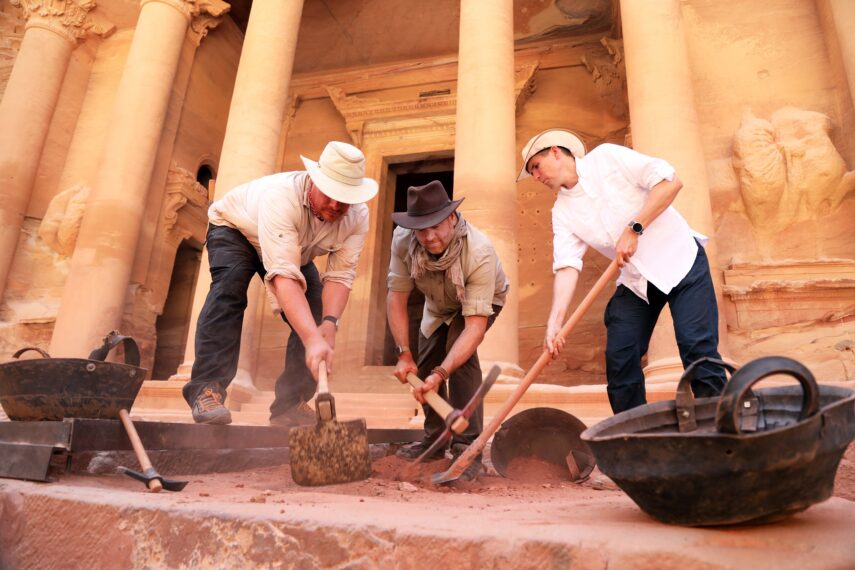
Josh Gates and Professor Pearce Paul Creasman with archaeologist Matthew Vincent digging in front of the Treasury at Petra. (Discovery)
It’s so interesting that there is little known about the Nabateans. What are you most excited for viewers to learn in terms of who they were?
The Nabateans are kind of the unsung badasses of this region. Everyone knows the Romans, Greeks, and Egyptians, but the Nabataeans controlled this massive trade empire a few thousand years ago. They really were the only people that could help connect some of the most important trade routes in the world. Since they were at the center of all that, they became incredibly powerful but also sophisticated. What you see in Petra is a capital city that is carved out of solid rock.
All the buildings are facades that were literally carved into the sandstone. So, a huge amount of engineering and artistic skill is required to create things like that. The Nabataeans with everything they build are borrowing from all these cultures they are coming into contact with. We see Greek and Roman influences in the way they are building their temples and columns. We see a Roman-style amphitheater in the middle of their city. This was a sophisticated culture, and we know very little about them. They have largely vanished into history.
The tombs above you are empty, but as you go down you find remains and 12 ancient skeletons. How surprised were you by those findings?
The discovery in this episode is just so beyond anything I ever expected. When you think about visiting a world wonder, you just don’t have an expectation that you’re going to be able to do this kind of excavation at such a significant place. Also, you might find something this significant. This is a huge discovery. Most of the tombs in Petra were found empty. Petra was never really abandoned by the local people. Today the Bedouins call the area around Petra home, but because it was never fully abandoned, a lot of those tombs were looted or cleared out in antiquities. So, when modern archeologists discovered or rediscovered the site, or I should say when the Western world discovered the site, it was largely empty. A real mystery. One of the most mysterious things about Petra is The Treasury itself.
That’s nuts if you think about it because it’s one of the most famous buildings in the world. An image we know from the Last Crusade and is one of the new Seven Wonders. It’s instantly recognizable, yet archeologists still don’t know much about this building They don’t know when it was built, who built it other than some Nabataean, or what it was for. It’s called The Treasury because there was a rumor that the grand treasure was housed there, but of course, there is no evidence of that.
Most people assumed it was a tomb, even though no bodies were found inside of it. There are no inscriptions anywhere on the building to tell you what it was for. To find a tomb packed with skeletons, which is so unheard of in Petra, is hugely important because The Treasury was built on top of this tomb for a reason. That gives archeologists a whole new list of clues for them to understand the motivation for building The Treasury above.
This is just your first adventure this season. What are some of the other journeys you’re looking forward to taking audiences with you on?
It’s a really wild season and a true global adventure. We’re going to travel to investigate, honest to God, pirate treasure off the coast of Cape Cod. Excavating with a team on one of the only authenticated pirate ships in teh world belonging to “Black Sam” Bellamy. We’re going to be investigating the largely forgotten story and lost treasure of America’s first train robbers, the Reno Gang. We’re also going to be going overseas to investigate the lost bones of Saint Nicholas. This is an awesome story I’m excited about. This is the historical saint who at one time became associated with Santa Claus. In antiquity, his bones were actually stolen twice. There is this amazing cold case of what became of the bones who became Santa. It’s a story that will take us from here all the way to Turkey and Italy and even to Illinois where there may be one of his bones, which is a pretty remarkable thought.
On your travels, what’s a comfort from home you always bring with you?
If I’m being honest, my phone. We can’t live without these devices anymore. They really are the only way to communicate. I keep my phone in my back pocket, which is very handy for phone calls and the occasional listening to music on long flights. I always try to carry with me a journal. I always tell people if you can just jot down a few words a day about your travels, it will be more meaningful to look back on than any picture you take. It’s a struggle. It’s hard at the end of the day to make a journal entry, but I’ve done it for most of my travels.
Amazing to think you’ve been doing this show for almost 10 years. How do you reflect on that milestone?
I reflect with great wonder and astonishment because when we first started this show, one of the first questions we asked ourselves was whether there were that many mysteries in the world that we could actively investigate. It turns out it’s a bottomless list. There is incredible work happening all over the world to understand our shared human story. So, I’m really proud of the show because it has allowed us to go and visit with these explorers and scientists and archeologists around the world who are doing sensational work.
I look back at some of the places we’ve been from excavating tombs in Egypt to discovering a Mayan Pyramid in the jungles of Guatemala. And I have to say, I’m excited about our season premiere. To go to Petra, one of the most famous places and the world, and be a part of an incredible discovery I think is one of our best moments on the show so far.
You have been doing these live shows. I think it’s the perfect time for the Halloween season where you’re talking about ghosts and monsters.
I spent so much time abroad that I don’t get much time to connect with folks who support the show. Doing a live talk is this awesome opportunity to get together with fans of the show and tell some of these incredible stories from around the world and hear their questions and engage in a conversation about exploration and the unknown. As we are approaching Halloween, everybody loves stories about the paranormal and ghosts. People are surprised that stories about ghosts and ghost hunting go back thousands of years. There are accounts of the Roman letter-writer Pliny the Younge writing about a reported haunting house a few thousand years ago. We have a long fascination with things that go bump in the night. I love getting together with fans and telling those stories and sharing this whole world of the unknown.
Expedition Unknown premiere, October 9, 9/8c, Discovery Channel
From TV Guide Magazine
Crime, Comedy & Convenience Stores: Unwrapping Hulu's 'Deli Boys' With the Cast
Cupcakes, corndogs…and cocaine?! Two brothers find themselves in a hilarious pickle when they inherit an unseemly bodega biz in Hulu’s new comedy Deli Boys. Find out how The Sopranos and Real Housewives of Orange County influenced the cast. Read the story now on TV Insider.

